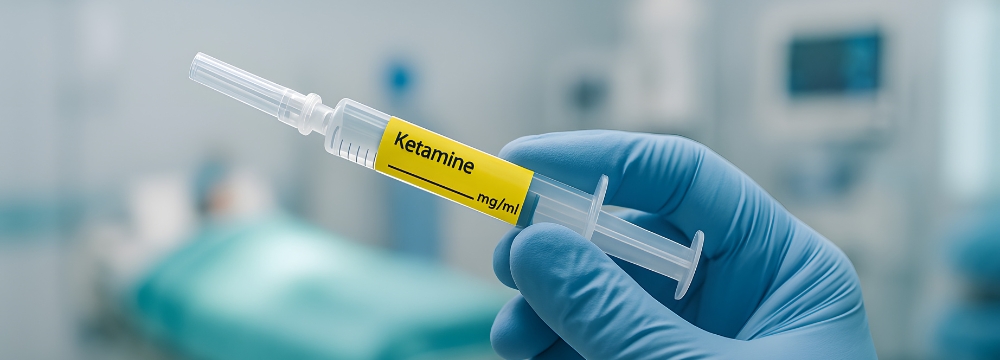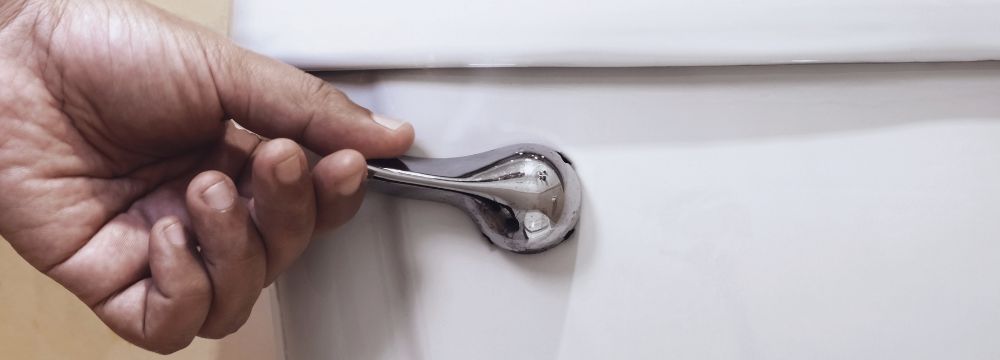
Ketamine isn’t just for the operating room anymore. Used primarily as a surgical sedative, this drug has made headlines in recent years for its role in treating depression, PTSD, and chronic pain – plus a more controversial reputation as a party drug. But alongside its growing medical use and misuse, a new concern has emerged: ketamine’s effect on the bladder.
We’re all about helping people understand urologic health. Since a lot is flying around in the news, we wanted to shed some light on what ketamine is, the bladder dysfunction it can cause, and how those pathologies can be treated.
Why the Sudden Buzz?
With the help of media attention, celebrity use of ketamine has been making headlines. Public interest piqued when high-profile figures were rumored to have ketamine-related medical issues. Whether or not those reports are accurate, they’ve brought needed attention to the potential consequences of ketamine (mis)use.
Ketamine has also gained traction in psychiatry, supported by a growing body of research and clinical trials.1 Legitimate clinics follow strict protocols and are staffed by credentialed healthcare professionals. Within these structured medical environments, ketamine has shown promise in treating conditions like treatment-resistant depression, PTSD, and chronic pain. But not all clinics meet those standards – some operate on the fringe, blurring the line between evidence-based care and risky experimentation.
With wider availability comes more exposure, and not always through the proper channels. Some individuals even choose to self-medicate without medical guidance. While therapeutic use can be life-changing, misuse can carry real risks.
What is Ketamine?
Initially developed in the 1960s, ketamine hydrochloride (ketamine) was approved by the United States Food and Drug Administration (FDA) for use as an anesthetic in emergency and battlefield medicine, surgery, dentistry, and pediatric procedures.
Pharmacologically, ketamine works as an NMDA receptor antagonist – meaning it blocks receptors in the brain involved in pain perception, memory, and mood regulation. This blockade increases levels of glutamate (a neurotransmitter), which triggers synaptogenesis (the formation of new connections between neurons) and brain-derived neurotrophic factor, or BDNF (important for cognitive functioning). These actions contribute to ketamine’s rapid effects in alleviating symptoms of depression and chronic pain.
Ketamine also acts as a “dissociative anesthetic” by disconnecting the brain from sensory input. This allows for sedation and pain relief without completely shutting down breathing or muscle function, making it particularly useful in specific medical settings like emergency and surgical procedures.
Despite its accepted medical uses, ketamine is classified as a Schedule III controlled substance, meaning it has legitimate clinical applications but also carries the potential for psychological dependence and misuse. When taken outside of supervised care, especially at high doses, ketamine can cause serious side effects.
According to the National Institute on Drug Abuse2, ketamine can distort perception of sight and sound and may create feelings of detachment from the body – a phenomenon sometimes referred to as a “k-hole.” Short-term side effects can include dizziness, nausea, blurred vision, and changes in blood pressure or heart rate. Long-term, frequent, or large doses have been linked to memory problems, anxiety, depression, and in some cases, psychosis (a mental state where a person loses touch with reality). Using ketamine with other substances, like opioids or “club drugs,” – can further increase the risk of life-threatening complications.
Another concern – and the topic of this blog – is ketamine’s impact on the bladder. Frequent recreational use has been associated with ketamine-induced uropathy, a condition that can cause symptoms similar to a urinary tract infection (UTI). We’ll explore that in more detail next.
How Does Ketamine Affect the Bladder?
Ketamine’s exact mechanism of harm in the bladder isn’t fully understood, but research suggests that the drug and its metabolites are excreted through the urine, where they come into prolonged contact with the lining of the bladder.3 This contact appears to trigger inflammation, fibrosis (scarring), and ulceration, leading to progressive damage over time.
Ketamine-induced cystitis is bladder-specific and otherwise known as ketamine bladder syndrome (KBS). KBS is characterized by inflammation, ulceration, and scarring of the bladder lining. Individuals with KBS commonly experience urinary frequency, urgency, dysuria (painful urination), nocturia (frequent nighttime urination), and pelvic or suprapubic pain. Bladder capacity often shrinks significantly due to fibrosis, which causes patients to urinate frequently and suffer from incomplete bladder emptying. Blood in the urine (hematuria) and urinary incontinence may also be present.
While the bladder bears the brunt of attention, ketamine may also impact the kidneys and ureters (the tubes that connect the kidneys to the bladder). Ketamine-induced uropathy is an umbrella term that incorporates the full spectrum of urinary tract injury, from bladder irritation to kidney dysfunction. As mentioned before, it can have similar symptoms to a UTI – but does not respond to antibiotics the way a UTI would. In advanced cases, urine flow can become obstructed, leading to hydronephrosis (swelling of the kidneys) and, potentially, kidney failure. The severity of uropathy usually depends on how long and how frequently ketamine has been used, with prolonged use increasing the risk of serious complications.
Treatment of Ketamine-Induced Urologic Pathologies
Though the exact biological mechanisms remain under investigation, ketamine’s toxic effect on the urinary system is well documented. Ongoing use significantly raises the risk of chronic bladder and kidney problems.
Caught early, ketamine-related bladder damage may be reversible, or at least manageable. But the first and most important step is stopping the use of ketamine. Ongoing exposure can worsen the damage and accelerate functional decline.
It’s important to note that medically supervised ketamine use administered at therapeutic doses, such as for surgical procedures, is not typically associated with the same risks. The exception to this would be any underlying medical concerns or history that would be discussed with your healthcare provider.
Here’s what treatment can look like:
Diagnosis: If someone presents with urinary symptoms and has a history of ketamine use, a urologist may run several tests:
- Urinalysis and urine culture to rule out infection
- Cystoscopy to visually inspect the bladder lining
- Urodynamic testing to assess bladder function
- Imaging to check for structural abnormalities
Management for mild cases:
- Oral medications like anticholinergics (to block nerve signals) or beta-3 agonists (to stimulate bladder capacity) can help reduce bladder spasms.
- Pain management may involve oral analgesics (pain relievers taken by mouth) or bladder instillations (medication delivered directly into the bladder).
- Increased hydration is often recommended to help dilute the urine, flush out irritants, and minimize bladder inflammation.
Advanced Therapies If symptoms persist or damage is more severe:
- Bladder instillations with hyaluronic acid or chondroitin sulfate – substances naturally found in healthy connective tissue – may help repair the bladder lining.
- Botox injections into the bladder wall can reduce muscle overactivity, calming spasms and improving bladder control.
- Neuromodulation therapies, such as sacral nerve stimulation, use gentle electrical impulses that can regulate the nerves controlling bladder function.
- Surgery, in extreme cases, may involve bladder augmentation (enlarging the bladder) or even urinary diversion (rerouting urine through a new pathway) if the bladder is no longer functional.
Treatment success depends on early action. Once the bladder wall is heavily scarred or the capacity becomes significantly reduced, conservative options become less effective, and surgical intervention may be the only path forward.
Ketamine Crossroads
Bladder issues from ketamine use can reflect a complex overlap between behavioral health, substance use, and access to care. For people using ketamine recreationally, these symptoms may serve as a wake-up call. And for those using it medically, it’s still important to stay informed and communicate openly with your care team, especially if anything feels off.
While this article focuses on the bladder, we’d be remiss not to acknowledge a potentially deeper issue: substance use disorder. If you or someone you know is struggling, there are hotlines, therapists, clinics, and support groups available to provide help. You don’t have to have all the answers before you reach out – just take the first step, make the call, and figure out the details as you go.
Dr. Natale takes his patients’ urinary health seriously. If you’re experiencing urinary symptoms and have a history of ketamine use, whether it’s medical or recreational, don’t wait. We can help identify the issue and offer treatment options before the condition worsens or becomes unmanageable. We’re here to help get you back on track – no judgment, just support.
1 Rosenbaum, S. B., Vikas , Patel, P., & Palacios, J. L. (2024, January 30). Ketamine. Nih.gov; StatPearls Publishing. https://www.ncbi.nlm.nih.gov/books/NBK470357/.
2 National Institute on Drug Abuse (NIDA). (2024, April). Ketamine. Nida.nih.gov. https://nida.nih.gov/research-topics/ketamine#health-risks.
3 Tsai, Y. C., & Kuo, H.-C. (2015). Ketamine cystitis: Its urological impact and management. Urological Science, 26, 153–157. https://doi.org/10.1016/j.urols.2014.11.003.


